Table of Contents
- Why Choose TempZone Floor Heating Mats?
- Planning Your Installation
- Step-by-Step Guide to Installing TempZone Floor Heating Mats Under Tile
- Watch It in Action
- Explore Other Electric Floor Heating Products
- Frequently Asked Questions
- Ready to Heat Things Up?
- Tools and Support
- Contact a Radiant Expert
- Explore Our Products
Installing electric floor heating under tile is easier than you think—especially with TempZone™ Floor Heating Mats. These DIY-friendly systems are designed for fast, safe, and efficient installation, making them a top choice for first-time installers and seasoned pros alike. Whether you’re upgrading a bathroom or tackling a new build, this guide will walk you through every step of the process.
Why Choose TempZone Floor Heating Mats?
TempZone Floor Heting Mats from WarmlyYours are pre-spaced electric heating cables attached to a fiberglass mesh for simple layout and consistent heat distribution. They’re ideal for tile, stone, or marble floors and are embedded directly into thinset or self-leveling cement.
Unlike cable-only systems, TempZone Floor Heating Mats reduce layout time and installation errors—perfect for DIYers and homeowners who want a smooth project from start to finish.
Planning Your Installation
Before jumping into installation, you’ll need a solid plan. Start by measuring the usable floor space—excluding areas beneath vanities, tubs, or toilets. Then, submit a sketch to WarmlyYours to receive a SmartPlan™. This detailed layout includes:
A custom installation diagram
Electrical plan with circuit requirements
Estimated operating costs
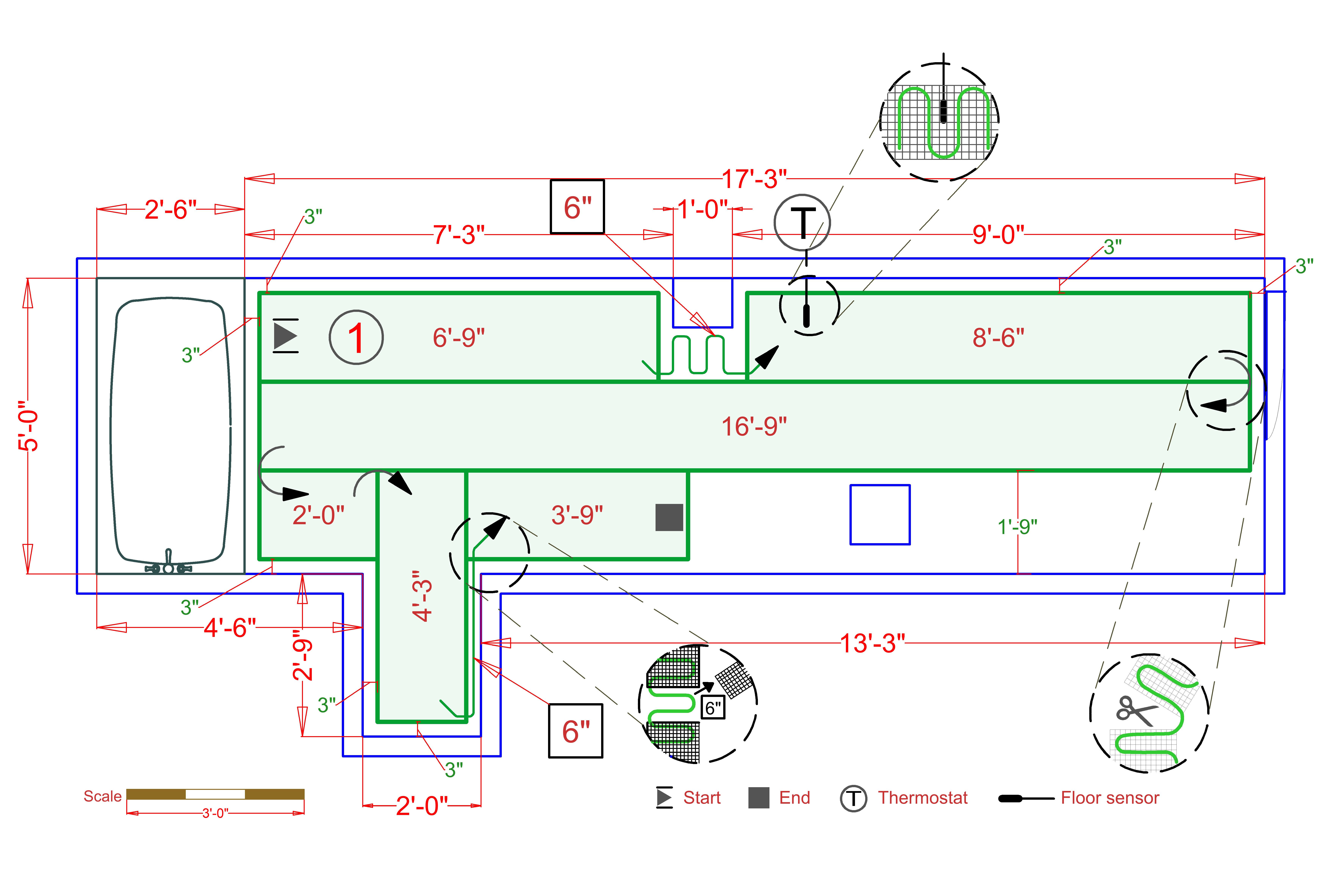
A SmartPlan also ensures clear communication between flooring installers and electricians—both trades must coordinate for a successful installation.
Bonus: WarmlyYours keeps records of all SmartPlans to assist with anything you might need in the future—whether it’s technical support, coordinating with a contractor, or transferring ownership to a new homeowner.
Step-by-Step Guide to Installing TempZone Floor Heating Mats Under Tile
1. Measure and Sketch Your Floor
Start by determining the usable heated area—this means excluding fixed objects like vanities, tubs, and toilets. Then, draw a sketch with accurate dimensions.
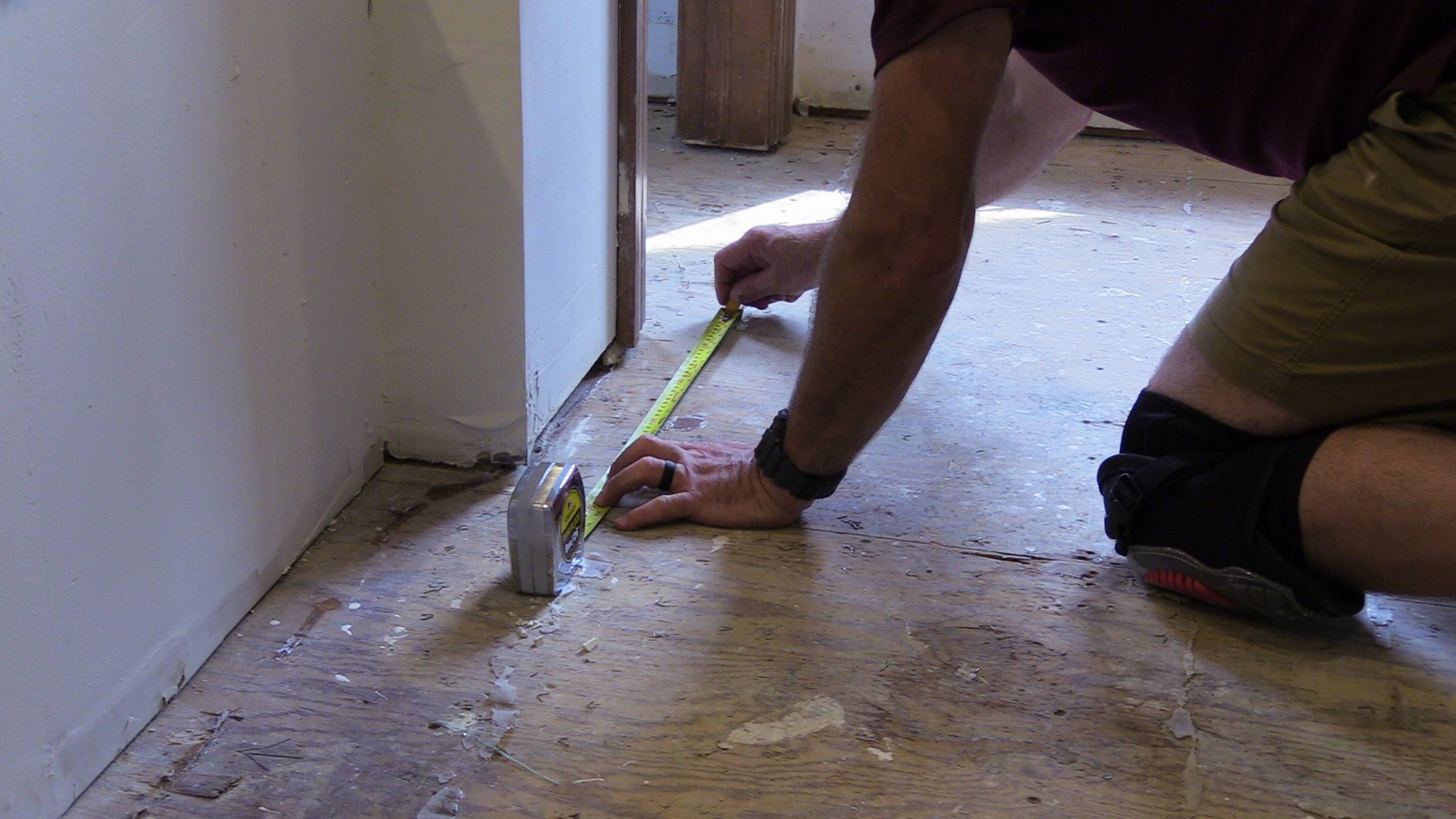
Your sketch is required to receive a custom SmartPlan from WarmlyYours. Be sure to include:
The room layout with dimensions
Any floor vents
The desired wall location for the floor heating thermostat
The SmartPlan also helps set expectations by highlighting which areas will be heated and which may not—such as within 12 inches of any wall, where floor heating is typically not prioritized because people rarely walk on those parts of the floor.
2. Prepare the Subfloor
Ensure the subfloor is clean, dry, and free of debris or sharp objects.
For concrete slab subfloors, install ThermalSheet insulation in a staggered pattern to prevent heat loss.
For wood subfloors, insulation isn’t necessary but a clean, level surface is essential.
Submit Your Floor Plan for a SmartPlan
3. Test the Heating Mats
Before installation, test each TempZone Floor Heating Mat using a digital ohmmeter. Readings should fall within 15% of the value listed on the UL label, which is permanently attached to the heating element.
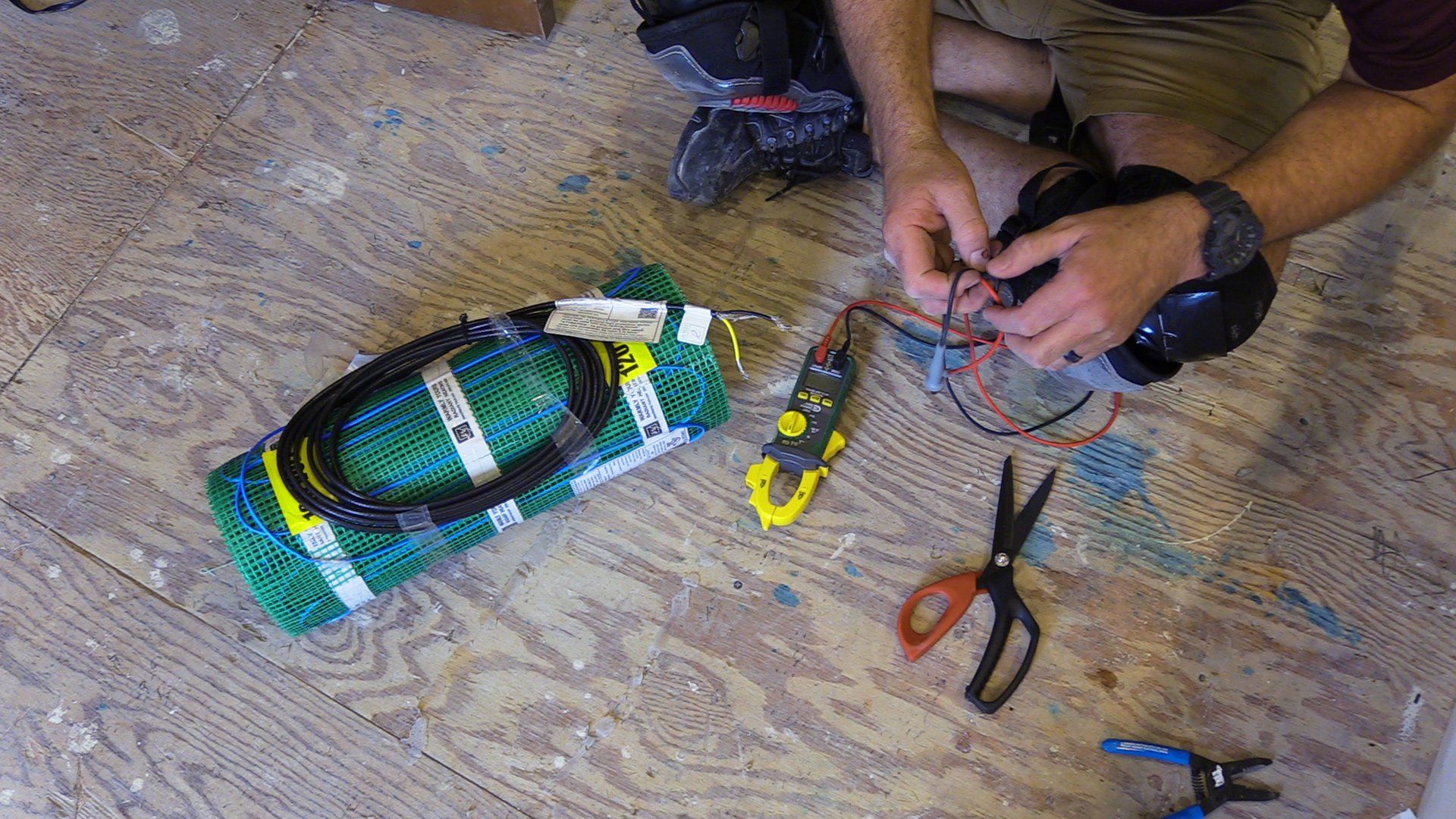
For added quality assurance, each TempZone Floor Heating Mat is tested three times at our factory—before, during, and after production. This rigorous process ensures your heating mat is in perfect working condition when it arrives at your home or job site.
4. Connect the Circuit Check
Before unrolling the mat, attach a Circuit Check device to the system wires.
This tool emits an audible alert if the heating cable is cut, nicked, or damaged at any point during installation—allowing you to fix the issue before tile is installed.
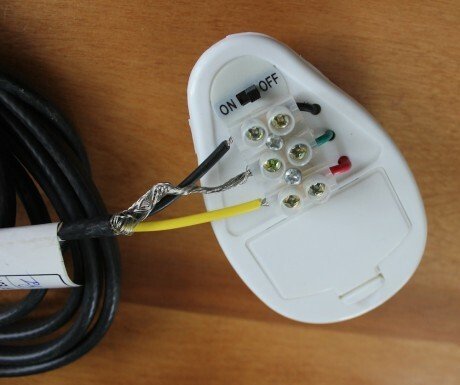
Leave the Circuit Check connected until tile installation is complete.
5. Lay Out the Heating Mats
Following your SmartPlan, roll out the mats. To change direction, cut the mesh—not the cable—and rotate the mat. Use hot glue or tape to secure it to the subfloor.
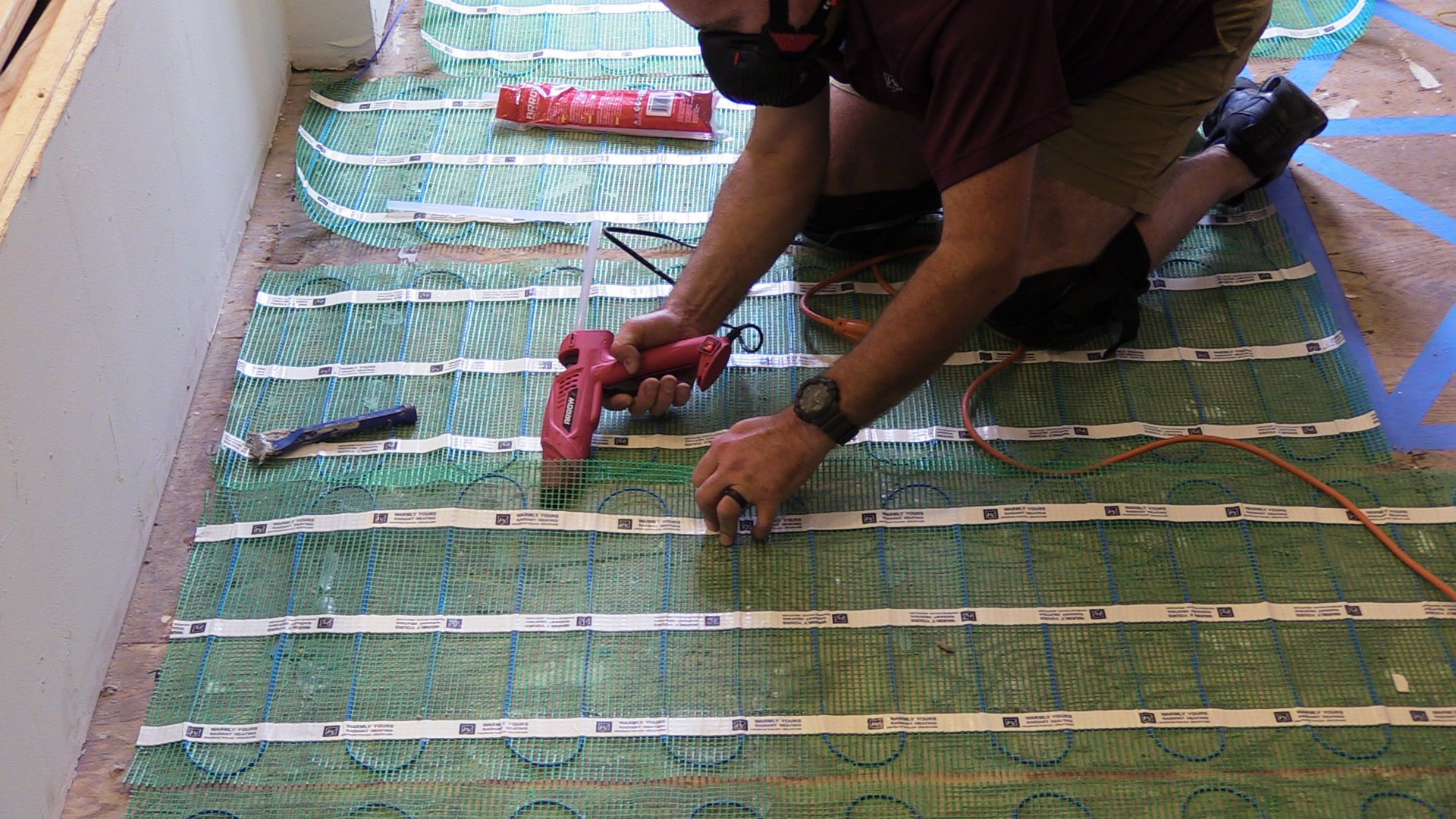
6. Install the Floor Sensor (Backup included)
Every WarmlyYours floor heating thermostat comes with two sensors—a primary and a backup. While only one sensor is connected to the thermostat, the second is installed in the floor and left unconnected as a built-in backup.
The active sensor should be placed between two heating cables, approximately 6 inches into the heated area. Avoid crossing it over any heating wires. Secure it using hot glue or by tucking it into the mesh per your SmartPlan.
The backup sensor remains dormant in the floor. If the primary sensor ever fails (which is rare), the backup can be connected without needing to remove tile—saving time, money, and hassle.
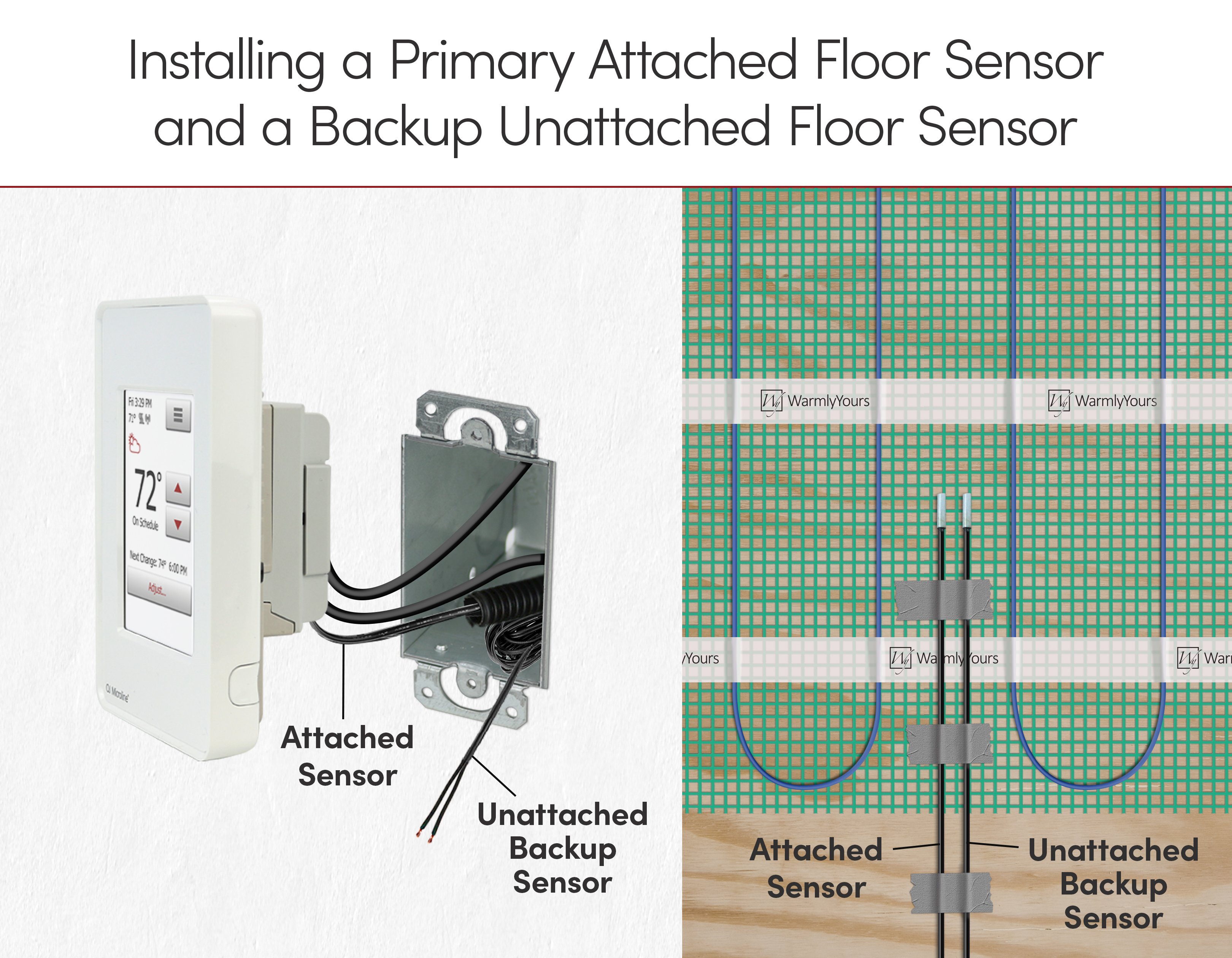
7. Retest the System
After the heating mat is installed and secured to the subfloor, use a digital ohmmeter to retest the system before covering it with thinset or self-leveling compound.
This step confirms that the heating element has not been accidentally damaged during layout or positioning. Even small, unnoticed issues—like pressure points or minor abrasions—can cause problems if not detected now.
Compare your new reading to the previous one to ensure consistency—values should be within 15% of the UL label. Any significant difference should be addressed before proceeding.
Important: Record your ohmmeter readings on the WarmlyYours warranty document and submit it to ensure full warranty coverage. This documentation confirms the system was tested properly at key stages of installation.
8. Connect the Thermostat
A licensed electrician should complete all wiring connections for safety and compliance with local codes.
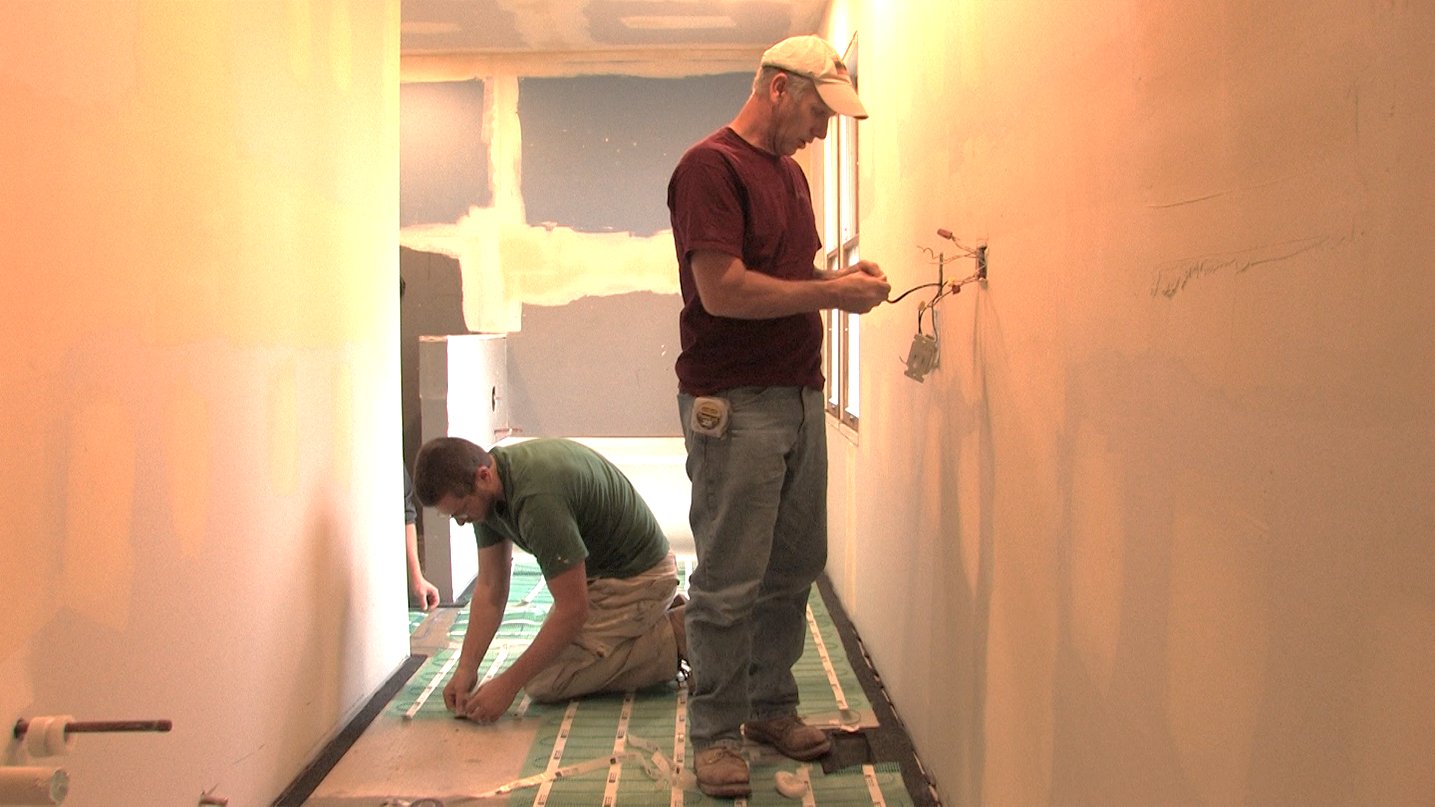
We recommend placing the heating system on a dedicated circuit—while not mandatory, doing so helps prevent interference from other electrical devices and ensures the floor warming system performs at its best.
Always use a thermostat with a built in GFCI to meet safety standards and protect against electrical issues.
9. Apply Thinset or Self-Leveling Compound and Install Tile
Spread modified thinset over the heating mats and set your tile. Use a leveling system to prevent lippage. Allow the mortar to cure fully before powering on your system.
Cover the TempZone Floor Heating Mat with either a modified thinset mortar or a self-leveling compound (SLC)—both are suitable depending on your project preference and installer experience.
After embedding the heating element, set your tile directly on top. Using a tile leveling system can help prevent lippage and ensure a flat, professional-looking finish.
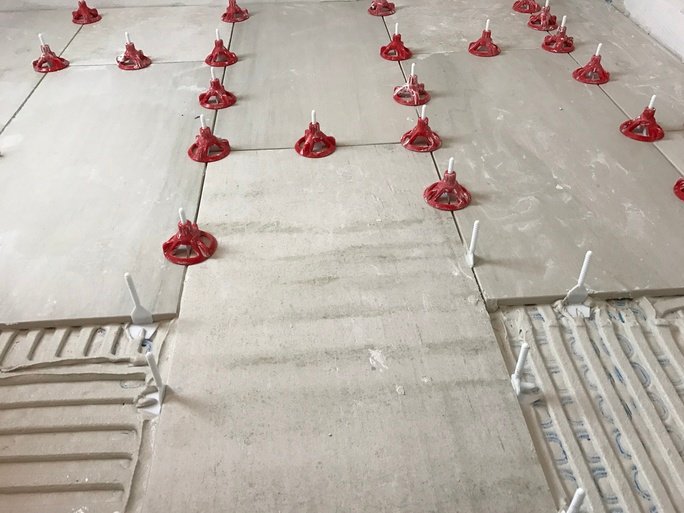
Always allow the mortar or compound to fully cure before powering on your radiant floor heating system.
Watch It in Action
See how easy it is to install a TempZone Floor Heating Mat with this step-by-step video. Whether you’re a DIYer or a seasoned pro, this walkthrough highlights key installation tips and best practices so you can confidently create a warm, luxurious tile floor.
Explore Other Electric Floor Heating Products
Looking for something more custom or flexible than TempZone Floor Heating Mats—our most DIY-friendly system? Check out these additional options:
TempZone™ Cable with Grip Strips – Flexible layout and budget-friendly
TempZone™ Cable with Prodeso Membrane – Crack isolation and fast 1-day installation
TempZone™ Custom Mats – Factory-designed to fit your exact room dimensions
Each is compatible with tile and offers efficient, reliable warmth tailored to your project’s needs.
Frequently Asked Questions
How thick is the TempZone Floor Heating Mat with thinset and tile?
Approximately 3/8” to 1/2”, depending on tile thickness and thinset depth.
Can I cut the heating cable?
Never cut the heating cable. Only cut the mesh to turn or reposition the mat.
Do I need insulation under the mat?
It’s highly recommended on concrete subfloors to prevent downward heat loss. Use ThermalSheet™ for best results.
Is a floor sensor required?
We recommend it for temperature precision and energy efficiency.
How long before I can turn on the system?
Wait 7–14 days for the mortar to cure fully, as specified by the thinset or SLC manufacturer.
Ready to Heat Things Up?
Get started with your free SmartPlan™, and let WarmlyYours help you bring comfort, efficiency, and luxury to your home. Questions? Our radiant experts are always here to help.
📞 Call 800-875-5285
✉️ Email info@warmlyyours.com
🛠️ Submit Your Floor Plan for a SmartPlan
Tools and Support
Contact a Radiant Expert
Have questions about your project? Reach out to our team or call us directly at (800) 875-5285.
Explore Our Products
Have Questions About Your Project?
Our team of Radiant Experts is ready to help!
Comments





very helpful
Thank you so much for reading! Good luck with your installation and remember, if you have any questions at all, don't hesitate to give us a call anytime at 1-800-875-5285!
Do you cave to bury the Matt with self leveling cement or thinset and let it dry before us using thinset and setting tile or can you put the Matt on the floor, glue it in place then just use thinset overtop with 1/2 x1/2 trowel and lay the tile.
Thanks for reading! It is possible to secure the heating mats to the subfloor and then install the tiles with thinset overtop (in a method we generally call "back buttering" as you work your way from the furthest corner of the room towards the door). But it is important to never turn on our heating system until the thinset or self-leveling compound has completely cured or it can cause brittleness (which in turn could ultimately compromise the integrity of your floor).